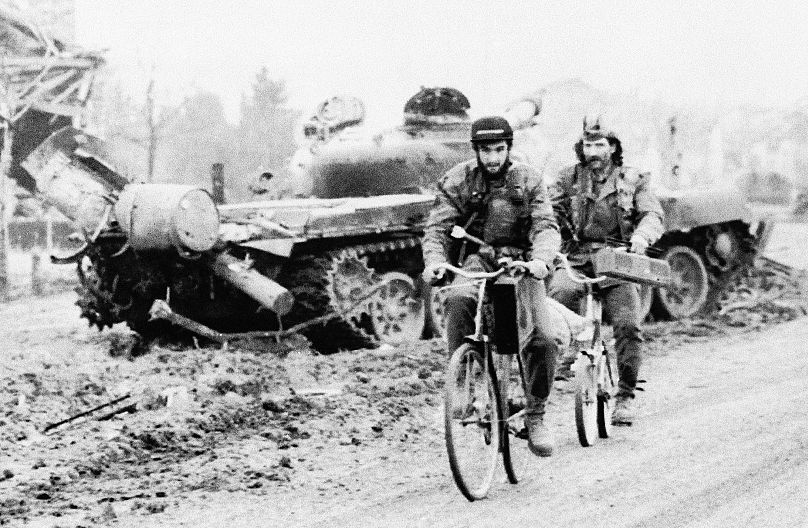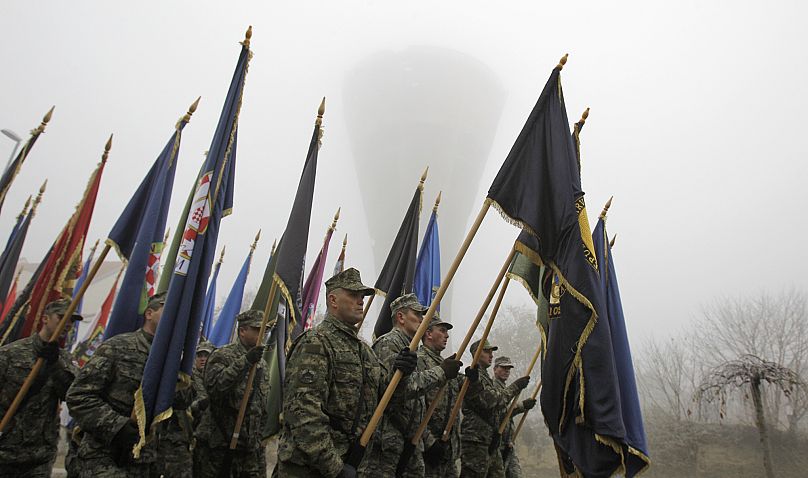Vukovar, 'Croatia's Stalingrad', saw the first massacre of the Balkan wars of the 1990s. It would not be the last.
In his seminal book on the wars on Yugoslavia, British journalist Misha Glenny describes reaching the outskirts of the Croatian city of Vukovar on the Danube in 1991, on day two of what would be a bloody 87-day siege by Serb militia and the Yugoslav National Army (JNA).
He and another journalist were told they could enter the town, but decided it was too dangerous.
“Later on we admitted to each other how often and how deeply we regretted that decision," Glenny recalled. "We had travelled to the edge of a crime without parallel in post-war Europe. It was our duty to report the precise details about Vukovar, but we were too scared."
Croatia's Stalingrad
Vukovar’s total destruction during what would be the first phase of the wars in Yugoslavia invited comparisons to Stalingrad during World War II. The town was surrounded by 40,000 JNA soldiers and Serbian paramilitaries and, for 87 days, defended by just 2,000 fighters with the Croat national guard. Even when the Serbs finally took the town, it was a pyrrhic victory.
“The exhilaration of Serb fighters and many civilians at the news of Vukovar’s liberation can be to an extent explained by ignorance. But anybody who believes that you can liberate a pile of useless ruins which you yourself have created needs remedial education in semantics,” Glenny wrote in his 1992 book, the Fall of Yugoslavia.
Hundreds of Croatian fighters were killed when Vukovar was taken, and tens of thousands of non-Serb inhabitants expelled. When it was finally returned to Croatia in 1998, the city was rebuilt and became a symbol of Croatian independence and resistance, as it remains today. Each year, tens of thousands gather in the city to commemorate its fall on November 18. You can watch this year's events in the video player, above.
But it is what happened next that helped secure Vukovar’s reputation amongst the massacres that would go on to define the wars in the Balkans, that would only come to an end four years later with the US-brokered Dayton Accords.
Despite a deal between the JNA and the Croatian government that Croat soldiers and civilians in the city would be evacuated, 261 men taken from Vukovar’s hospital were transported to a farm building at Ovcara, outside the town, and beaten. They were then taken in groups of between 10 and 12 to another site where they were shot and buried in a mass grave.
In 1996 Slavko Dokmanovic, the Serb mayor of Vukovar at the time, was indicted for war crimes over the incident and arrested by the UN. He later hanged himself in prison. At least two JNA officers were later convicted by the International Criminal Court, and it was one of a number of war crimes for which Slobodan Milosevic was accused before his own death in 2006.
Reparations
Despite the convictions, Vukovar remained a thorny issue between Serbia and Croatia, with Zagreb seeking reparations from Belgrade over the issue. In 2015, the International Court of Justice ruled that despite serious crimes having been committed at Vukovar, Croatia had not proved that genocide had been committed during the hospital massacre.
In response to the claim, Belgrade alleged that Croatia had committed ethnic cleansing by expelling 200,000 ethnic Serbs from Croatia in 1995. The ICJ, again, found that although crimes had been committed, the evidence was not conclusive.
It concluded that although many crimes had been committed by the forces of both countries during the conflict, neither side had succeeded in proving the intent to commit genocide by “destroying the population in whole or in part”.
Reflecting on the atrocities committed by both Serbs and Croats in the early 1990s, shortly before the massacres at Srebrenica and the siege of Sarajevo would make the towns and cities of the Balkans household names, Glenny warned that justifying massacres by pointing to those committed by the opposing side would only ensure that the pattern of violence continued.
“There is no sense trying to apportion blame for the vile, murderous activities of Serb and Croat extremists,” Glenny wrote. “For once the logic of the conflict had passed the point of no return, the massacres were inevitable.”
This article was originally published in October 2020.













